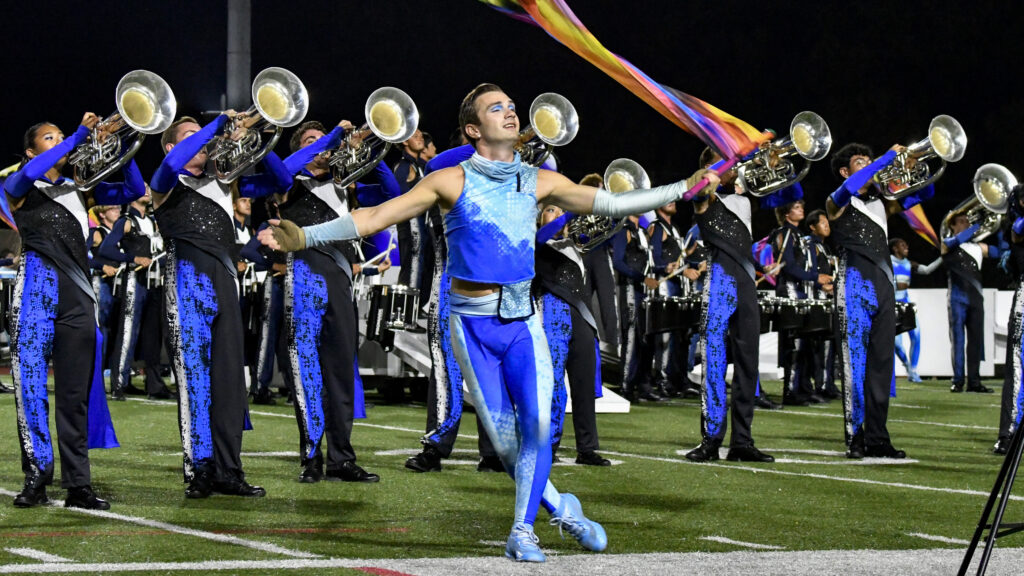Fanfare is dedicated this week and next to the memory of the Hawthorne Muchachos, one of the most popular corps to grace the junior corps field. This week, Jack Haupt remembers the unit in which he learned to love drum corps. Here is Jack’s note: I was reading your latest contribution to DCI.org, “The Wonders of Drum Corps,” submitted by readers. Obvious in their absence are the Muchachos of Hawthorne, N.J. I played snare drum with the corps from 1959 through 1967. They were no powerhouse during those years, but during the DCI years, especially 1974 and 1975, they were incredible! Dennis Delucia’s percussion was unmatched by anyone at the time. And the horn section, well … I’ve listened over and over again to the DCI recordings from 1972-1975 (of course there is no DCI recording of Muchachos from 1975 on because of their disqualification), and no one comes close. Well, maybe Madison and Anaheim come close, but not close enough. In fact, I find myself measuring today’s brass sections against the mid-1970s Muchachos line. In my estimation that’s a pretty tough yardstick! I grew up in drum corps — the Hawthorne Muchachos to be exact. I was 9 years old when I joined on the first day of their existence in January of 1959 and I remained an active member until August of 1967 when I went away to college. I never went back to drum corps after that. Well, not until 1988, when the DCI World Championships showed up in Kansas City, where I had moved seven years earlier. I was amazed at what had happened to drum corps since I left 21 years earlier! The drill design had changed. There were dancers on the field, sometimes in lieu of a color guard. There was no color presentation or concert formation. Corps weren’t marching. They were doing jazz runs and whatever else. But the musicianship was so far superior to what I had grown up with; I could hardly believe what I was hearing, much less seeing! When I inquired about my corps, I heard the Muchachos had folded. Then I heard that in 1975 they were poised to take the whole enchilada, but were disqualified for fielding an over-aged member. And that was that. But my wife and I started to follow shows more and more; I became reacquainted with the activity and my wife got introduced to the activity. Flash-forward to 2002 and Drum Corps World’s volume one of “A History of Drum and Bugle Corps.” My wife purchased it for me for our wedding anniversary, which happens to be Christmas Eve. I spent most of Christmas day, in between opening presents and taking pictures of my granddaughter, reading about the Muchachos during their DCI years and a reference to their disqualification. I was amazed at what I read about what a powerful corps they had become! Certainly we were no powerhouse when I was marching. I listen to my old recordings, and frankly I grimace when I hear some of our performances! Now jump ahead a few months in 2003. About that time I had responded to a Steve Vickers’ request for writers of the histories of several corps for his second volume of “History of Drum and Bugle Corps.” Having marched with the Muchachos from its first day until August of 1967 when I went away to school, I offered my services. Steve was primarily interested in the DCI years as those were the years of the Muchachos’ greatest influence. However, I didn’t know anything about them in the DCI years, but Steve needed their history, which I had stored up in scrapbooks and old Stetson D. Richmond recordings! Steve hooked me up with a guy, Les Katzel, who marched Muchachos in the 1970s, including that fateful 1975 season. Les turned me on to the recordings from 1971-1975 about the same time I ordered the “Collector’s Series 1972-1975” from DCI.org. So it was at that time I became familiar with my former corps and was able to listen comparatively to the Muchachos and the other top corps of that period. I have to say that their horn line during those years, particularly 1974 and 1975, was spectacular! There is no doubt in my mind that they were the best there was. I listen to pretty much everyone, including the current world leaders (the Cavaliers, Blue Devils, Cadets, etc.), and I would put the 1974-1975 Muchachos up against any of them without trepidation. Listen to the 1974 or 1975 season, to “Picturas de Espana” or “Marianne” or “Concierto Aranjuez.” No one comes close. I’ve started listening to shows, comparing the horn line in front of me with the Muchachos I have come to admire so much. I think it’s a most demanding yardstick. Now before you go throwing bottles of valve oil at me, let me say I was a snare drummer, but I do have a music degree, and I stand by my opinion that the 1970s Muchachos horn lines were without equal. Today’s horn lines are terrific — make no mistake about that. But it’s comparing apples to oranges, since today’s kids have three valves, while the corps of the 1970s had two valves and a slide or rotary. (When I marched, the horns had a single valve and a slide or rotary.) And today’s kids have to move so much and more quickly that it must be extremely difficult to play with the virtuosity they display night after night. So while the corps of the 1970s may have had the advantage based on the less demanding drill design, today’s corps have the advantage of three valves, improving intonation, pitch and increasing the level of difficulty in musical scores. But based on sheer sound, I think Muchachos were it! Jack Haupt
Michael Boo has been involved with drum and bugle corps since 1975, when he marched his first of three seasons with the Cavaliers.
He has a bachelor’s degree in music education and a master’s degree in music theory and composition.
He has written about the drum corps activity for over a quarter century for publications such as Drum Corps World, and presently is involved in a variety of projects for Drum Corps International, including souvenir program books, CD liner notes, DCI Update and Web articles, and other endeavors.
Michael currently writes music for a variety of idioms, is a church handbell and vocal choir director, an assistant director of a community band, and a licensed Realtor in the state of Indiana. His other writing projects are for numerous publications, and he has published an honors-winning book on the history of figure skating.
His hobbies include TaeKwonDo and hiking the Indiana Dunes.
But more than anything, Michael is proud to love drum corps and to be a part of the activity in some small way, chronicling various facets of each season for the enjoyment of others.





